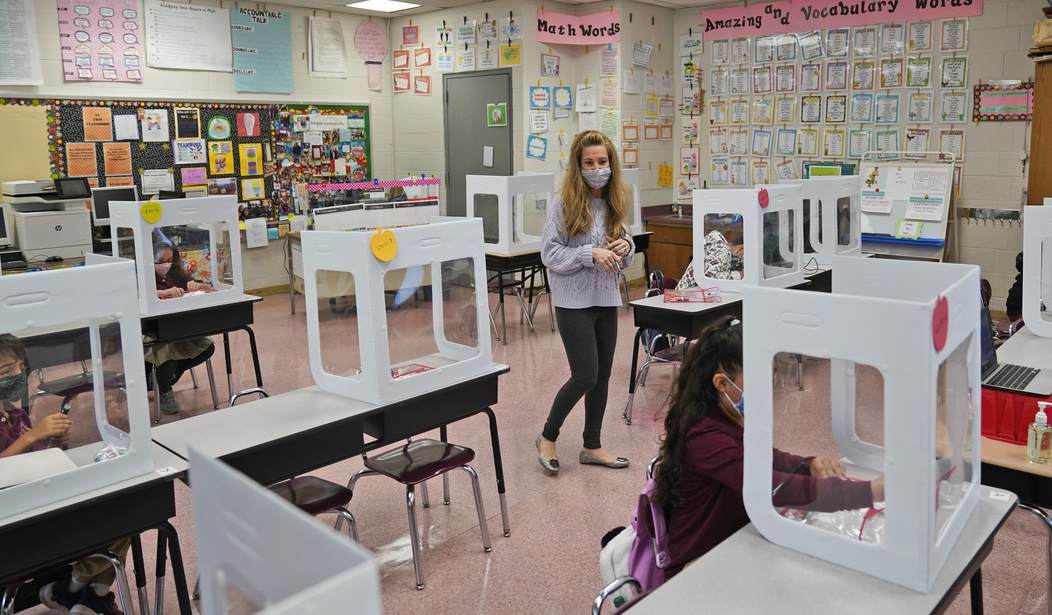After the disaster of remote learning, which teacher’s unions dragged out unnecessarily, we added the phrase “pandemic learning loss” to our collective vocabulary. The hope was that kids who were now months behind would be able to make up for those losses over time, i.e. to catch up. But it hasn’t worked out that way.
Despite billions of federal dollars spent to help make up for pandemic-related learning loss, progress in reading and math stalled over the past school year for elementary and middle-school students, according to a new national study released on Tuesday.
The hope was that, by now, students would be learning at an accelerated clip, but that did not happen over the last academic year, according to NWEA, a research organization that analyzed the results of its widely used student assessment tests taken this spring by about 3.5 million public school students in third through eighth grade.
In fact, students in most grades showed slower than average growth in math and reading, when compared with students before the pandemic. That means learning gaps created during the pandemic are not closing — if anything, the gaps may be widening.
One of the reasons students aren’t catching up is that many more of them are chronically absent than was the case pre-pandemic. As the director of a group that monitors attendance suggested, going to school every day just isn’t the norm anymore for a lot of kids.
Nearly 70 percent of the highest poverty schools experienced widespread, chronic absenteeism in the 2021-22 school year, compared with 25 percent before the pandemic, according to a new analysis released on Friday by Attendance Works, a nonprofit that aims to reduce chronic absenteeism, and the Everyone Graduates Center at Johns Hopkins University, which focuses on high school graduation preparedness…
“Prior to the pandemic, going to school every day was still the norm,” even in the poorest schools, said Hedy Chang, the executive director of Attendance Works. That is no longer the case.
In the most affluent schools, widespread chronic absenteeism also increased: to 14 percent of schools, up from 3 percent before the pandemic.
Absenteeism seems to have peaked in the previous (2021/22) school year but in most cases it has only improved slightly this year. And looking around I can see there are local news stories from around the country about states and school districts that are struggling with this. Here’s a story from Massachusetts:
At a meeting of the state’s board of elementary and secondary education Tuesday, commissioner of K-12 education Jeff Riley said addressing chronic absenteeism will be “the most important thing we can do … if we want to improve outcomes for children.”…
“This level of absenteeism is something we’ve never seen before,” Riley said. “The numbers are staggering across this country.”…
In 2019, just 13% of kids statewide were designated chronically absent. That rate rose, by June 2022, to nearly 29%. The latest data shows modest improvement but remains above 22%.
From Illinois:
About 28% of students were chronically absent from school last year. That’s a slight decrease — about a 1.5 percentage point — from the 2021-22 school year when about 29.8% of students were chronically absent…
The report card shows high rates of absenteeism among Black, Native American, and Latino students. But Black, Latino, Asian American, and white students also saw improvement in school attendance compared in 2021-22.
And from California:
“This is a crisis, and it’s not going to change until we do everything we can to get kids back in school 100%,” said Heather Hough, director of Policy Analysis for California Education. “What we all fear is that this will become the new normal.… It is hard to overstate the importance of this issue, and it is absolutely a pivotal moment.”
Before the pandemic, about 10% of students in California’s public schools missed at least 10% (or 18 days) in a school year, which the state defines as chronically absent. But COVID-related school closures, remote learning and quarantines have created a new habit for millions of families: optional, not mandatory, daily school attendance.
Even though California law requires all children ages 6 through 18 to attend school every day, nearly 2 million students were chronically absent in 2021-22, the most recent year data is available. Nearly every group of students had high rates of absenteeism, but the highest rates were among kindergartners. Kindergartners who are Black, Pacific Islander or have disabilities all had rates of 50% or higher.
So we’ve collectively spent billions of dollars to solve the learning loss problem but nearly four years after the start of the pandemic we seem to have settled into a new normal where a lot of kids (and their parents) treat school attendance as optional. As you can see, the people closest to the problem think this is a crisis. Personally I suspect this may have something to do with the terrible new standard set during the pandemic where students who stopped showing up were not allowed to fail or even have their grades drop. That was the wrong lesson to teach kids and it may take a while to unteach it.








Join the conversation as a VIP Member